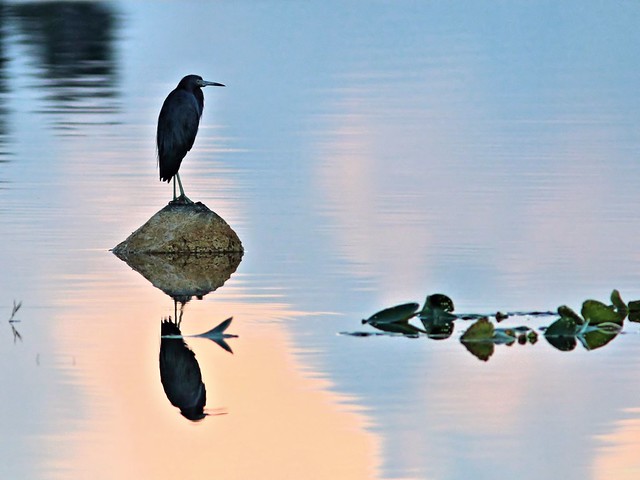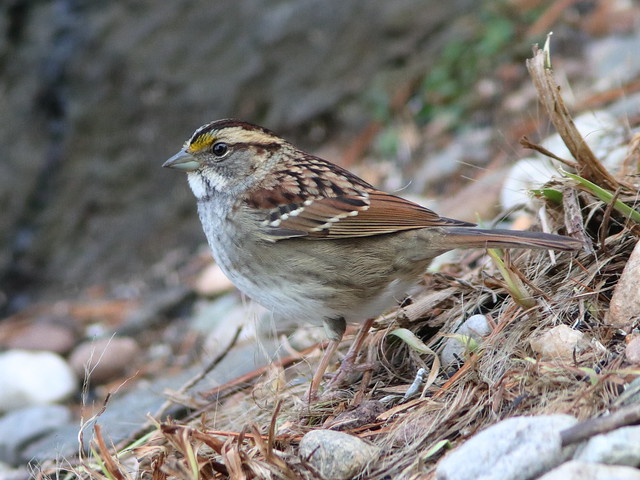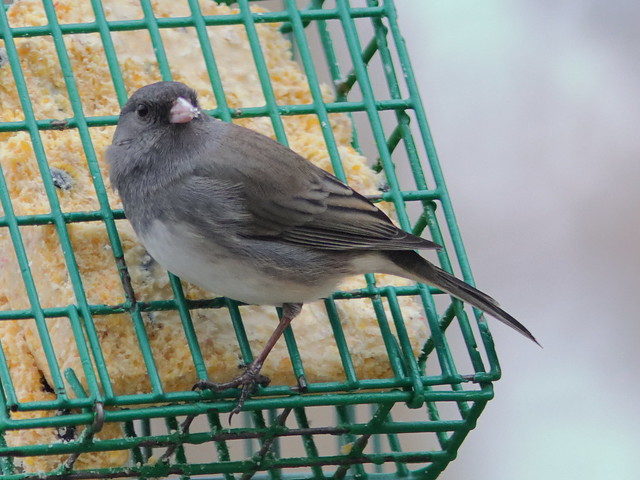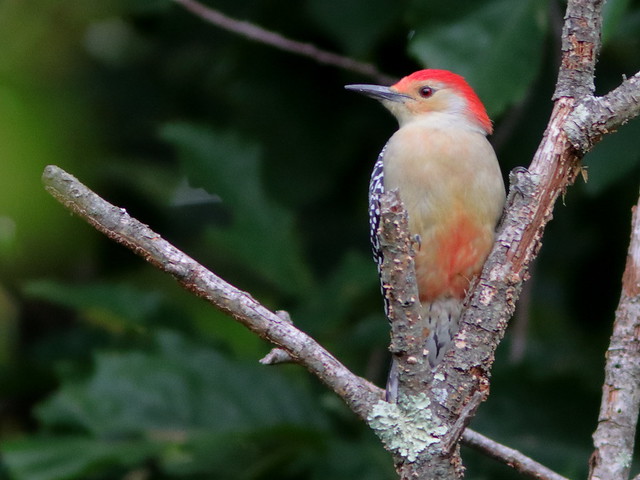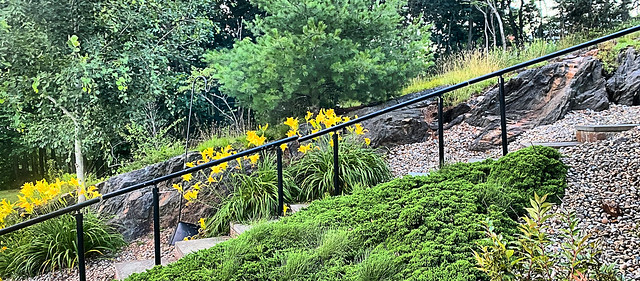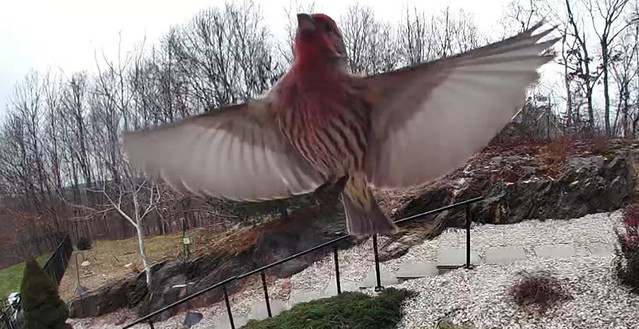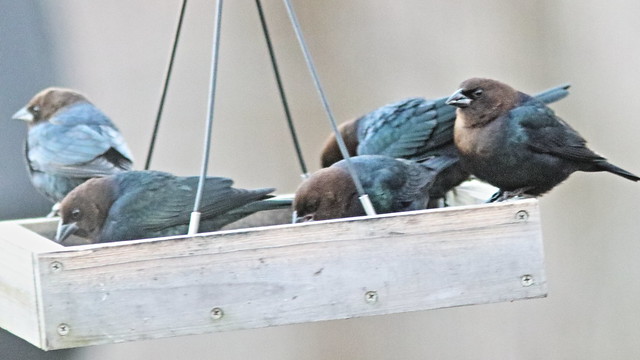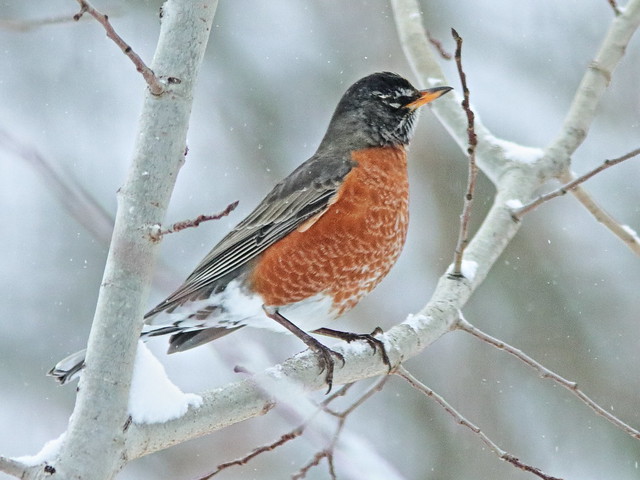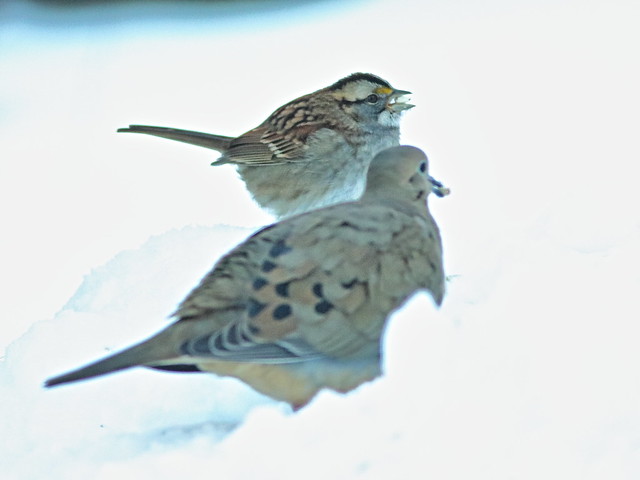Sparrows are the most common birds to visit our yard and feeders. During the warm months, resident Chipping Sparrows, Song Sparrows, Eastern Towhees and a few Field Sparrows prevail, along with introduced House Sparrows. All disappear in winter, except for a few hardy Song Sparrows and House Sparrows, replaced by an influx of Juncos and White-throated Sparrows. Less common to rare during the winter are Fox Sparrows, White-crowned Sparrows and American Tree Sparrows, species seen more frequently during winter when we lived part-time in northern Illinois.
When I was a beginning birder in the 1940s we saw that White-throated Sparrows occurred in two rather distinct plumages, more evident in late winter, before they departed for more northern breeding ranges. The bird books identified those with dull-looking tan head stripes and more heavily streaked breasts as "Immature:"
Those with bright white head stripes and clearer breasts were said to exhibit "adult" plumage:
Since then, studies have shown that the two plumages were not tied to their age or sex. Indeed, both color morphs occupy the same range and are genetically identical except for a non sex-linked gene. This excerpt from Birds of the World offers a succinct description of their differing behaviors:
Throughout its extensive range the White-throated Sparrow... exhibits plumage polymorphism (white-striped and tan-striped morphs) in both sexes, most obvious in the breeding season, associated with a difference in an autosome. These differences in plumage and karyotype are maintained by negative assortative (disassortative) mating – each morph mates with its opposite. Plumage differences are paralleled by differences in behavior and breeding strategy. White-striped (WS) males sing more, are more aggressive and more likely to engage in extra-pair copulation than their tan-striped (TS) counterparts. TS birds of both sexes provide more parental care than WS birds. REF: Birds of the World
Dark-eyed Juncos visited the suet feeder...
...as did Blue Jays:
A Northern Cardinal perched In the bare Aspen:
I obtained only one decent view of a Tufted Titmouse:
White-throated Sparrows are aptly named for their eponymous patch, but the Red-bellied Woodpecker seems not to match its description. This is a female, which lacks red on her forehead. From this angle, she also appears to have a very white belly:
Ah, there's the red belly, on this male!
The cold rain and then two episodes of snow, followed by freezing rain, made MaryLou's walks out to put up and remove the feeders too treacherous, even though she relocated them to a spot nearer the home which was accessible on level ground but almost out of sight from the windows. The weather conditions confined us inside our house all week. Dreary skies were uninteresting, so I had to find old shots for my SKY and REFLECTION memes--
This is an image of sunrise through the dining room window, taken in February, 2022:
Our local lake before it froze over, in December, 2022:
This week's header: Garden steps 6 months ago, July, 2023
= = = = = = = = = = = = = = = =
Linking to:
Wordless Wednesday (on Tuesday)
Please visit the links to all these posts to see some excellent photos on display
________________________________________________
















